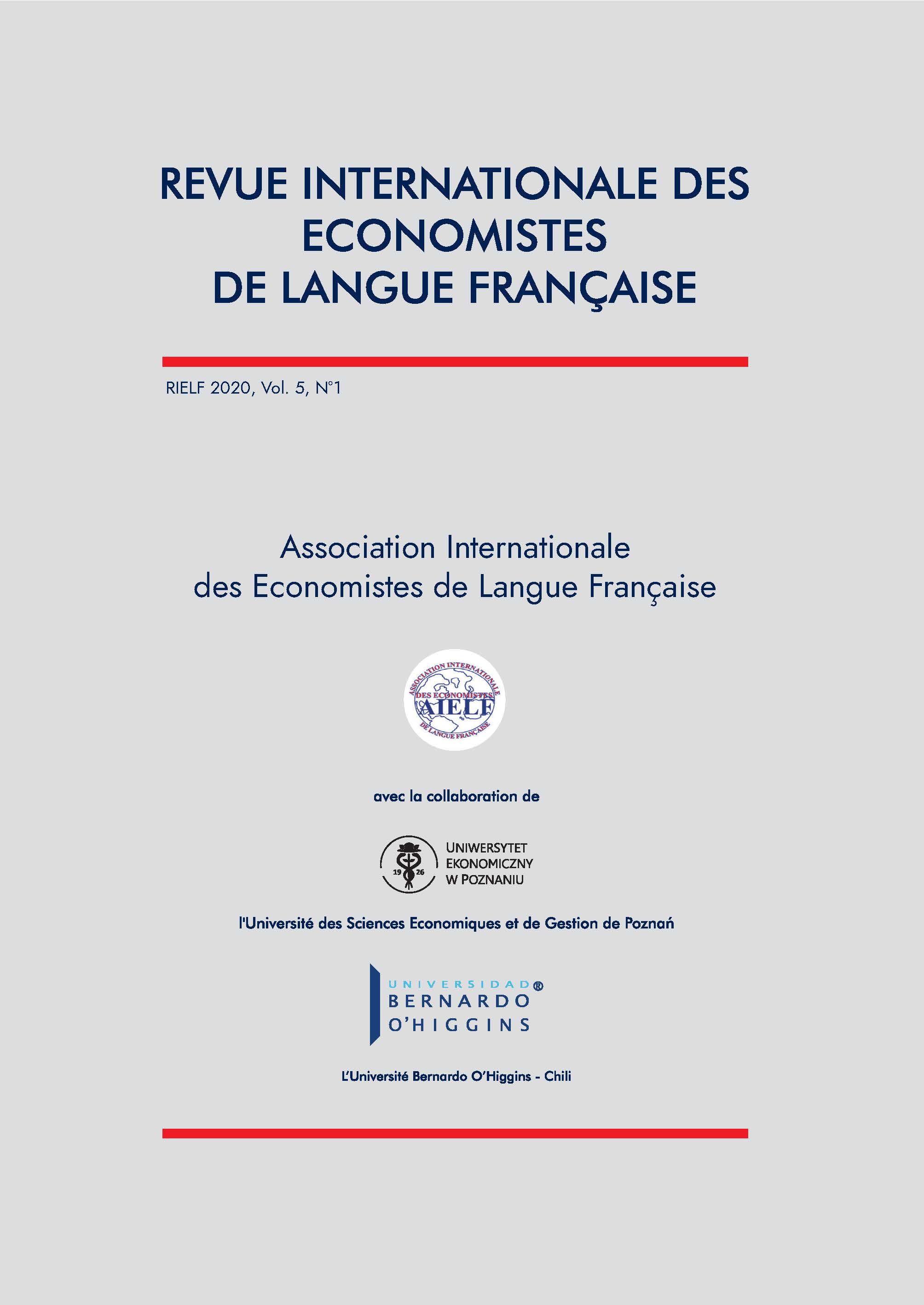Concurrence 'hybride' , innovation et régulation : un modèle de duopole
DOI :
https://doi.org/10.18559/rielf.2020.1.10Mots-clés :
firme, communauté, innovation fermée, innovation ouverte, appropriationRésumé
Cet article présente un modèle de duopole dans lequel une firme et une communauté se concurrencent en produisant des produits/services numériques tout en ayant la possibilité de partager leurs innovations pour développer leurs propres activités. Nous montrons que la firme bénéficie toujours d ' un changement de régime 'ouvert ' ou 'fermé ' d ' innovation. Notre analyse numérique souligne que, si un 'basculement fermé ' est favorable au bien-être social et à l ' innovation agrégée, celui-ci n ' est pas systématiquement profitable à la firme. Ces observations exposent clairement une défaillance de marché potentielle, tout en nuançant les vertus du paradigme d ' innovation ouverte en matière de maximisation des profits.
Téléchargements
Références
Belleflamme, P., & Peitz, M. (2010). Digital piracy: Theory. (CORE Discussion Paper No. 2010/60).
View in Google Scholar
Bonaccorsi, A., Giannangeli, S., & Rossi, C. (2006). Entry strategies under competing standards: Hybrid business models in the open source software industry. Management Science, 52(7), 1085-1098.
View in Google Scholar
Chellappa, R. K., & Shivendu, S. (2005). Managing piracy: Pricing and sampling strategies for digital experience goods in vertically segmented markets. Information Systems Research, 16(4), 400-417.
View in Google Scholar
Chesbrough, H. W. (2003). Open innovation: The new imperative for creating and profiting from technology. Cambridge: Harvard Business School Press.
View in Google Scholar
Chesbrough, H. W. (2006). Open business models: How to thrive in the new innovation landscape. Cambridge: Harvard Business School Press.
View in Google Scholar
D’Aspremont, C., & Jacquemin, A. (1988). Cooperative and non-cooperative R&D in du- opoly with spillovers. American Economic Review, 78, 1133-1137.
View in Google Scholar
D’Aspremont, C., & Jacquemin, A. (1990). Cooperative and non-cooperative R&D in du- opoly with spillovers: Erratum. American Economic Review, 80, 641-642.
View in Google Scholar
David, P. A. (1998). Common agency contracting and the emergence of ‘open science’ institutions. American Economic Review, 88(2), 15-21.
View in Google Scholar
David, P. A. (2004). Understanding the emergence of ‘open science’ institutions: Functionalist economics in historical context. Industrial and Corporate Change, 13(4), 571-589.
View in Google Scholar
Economides, N., & Katsamakas, E. (2006). Two-sided competition of proprietary vs. open source technology platforms and the implications for the software industry. Management Science, 52(7), 1057-1071.
View in Google Scholar
Fershtman, C., & Kamien, M. L. (1992). Cross-licensing of complementary technologies. International Journal of Industrial Organization, 10(3), 329-348.
View in Google Scholar
Flowers, S. (2008). Harnessing the hackers: The emergence and exploitation of outlaw innovation. Research Policy, 37(2), 177-193.
View in Google Scholar
Grand, S., Krogh, G. von, Leonard, D., & Swap, W. (2004). Resource allocation beyond firm boundaries: A multi-level model for open source innovation. Long Range Planning, 37(6), 591-610.
View in Google Scholar
Hui, K. L., & Png, I. (2003). Piracy and the legitimate demand for recorded music. Contributions to Economic Analysis and Policy, 2(1), 1-11.
View in Google Scholar
Merton, R. K. (1973). The sociology of science: Theoretical and empirical investigations. Chicago: University of Chicago Press.
View in Google Scholar
Nelson, R. R. (1959). The simple economics of basic scientific research. Journal of Political Economy, 77(3), 297-306.
View in Google Scholar
Nelson, R. R. (2004). The market economy, and the scientific commons. Research Policy, 33(3), 455-471.
View in Google Scholar
Pastor, M., & Sandonis, J. (2002). Research joint ventures vs. cross licensing agreements: An agency approach. International Journal of Industrial Organization, 20(2), 215-249.
View in Google Scholar
Peitz, M., & Waelbroeck, P. (2006). Piracy of digital products: A critical review of the theoretical literature. Information Economics and Policy, 18(4), 449-476.
View in Google Scholar
Rossi, M. A. (2006). Decoding the free/open source software puzzle. In J. Bitzer, P. J. H. Schröder (Eds.), The economics of open source software development (pp. 15-55). Oxford: Elsevier.
View in Google Scholar
Schulz, C., & Wagner, S. (2008). Outlaw community innovations. International Journal of Innovation Management, 12(3), 399-418.
View in Google Scholar
Shapiro, C., & Varian, H. R. (1998). Information rules: A strategic guide to the network economy. Cambridge: Harvard Business School Press.
View in Google Scholar
Toffler, A. (1980). The third wave. New York: William Morrow and Co.
View in Google Scholar
Varian, H. R. (2000). Buying, sharing and renting information goods. Journal of Industrial Economics, 48(4), 473-488.
View in Google Scholar
von Hippel, E. (1986). Lead users: A source of novel product concepts. Management Science, 32(7), 791-805.
View in Google Scholar
von Hippel, E. (1988). The sources of innovation. New York: Oxford University Press. von Hippel, E. (2005). Democratizing innovation. Cambridge: MIT Press.
View in Google Scholar
Téléchargements
Publiée
Numéro
Rubrique
Licence
(c) Copyright Thomas Le Texier, Ludovic Ragni 2020

Ce travail est disponible sous licence Creative Commons Attribution - Pas d’Utilisation Commerciale - Partage dans les Mêmes Conditions 4.0 International.





